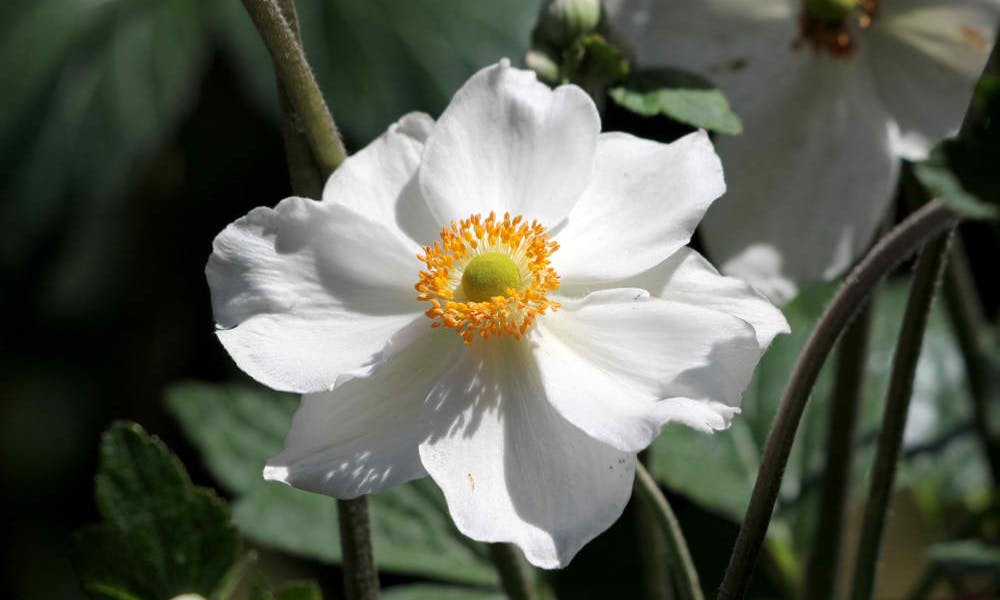MENU
Anemone: Their History, Meaning and Care

Anemone – the m and n’s tango on the tongue like a tongue twister. The sea anemone is the first thought that comes to most people’s minds. This might even lead thoughts to the scene from “Finding Nemo” where Nemo, much like a lot of people, struggles to pronounce anemone. But there is another anemone you might not know about. It is a radiant flower that is the choice of many not only for their gardens, but for their celebrations. A flower that has been used for its medicinal properties, for its secret language, and for the elegance it brings to celebrations.
As you read this, you can learn the following:
- General Characteristics
- History
- Modern Meaning and Symbolism
- Appearance in Culture
- Planting and Care
General Characteristics
All varieties of anemones have similar characteristics. They all bloom in the time span of early spring through late fall. These flowers can grow up to four feet tall and are cultivated for their colorful flowers of bluish violet, white, pink, and red. The plants are generally low maintenance, thriving in different types of soil including chalky and clay. The anemone is tolerant of deer, disease, and rabbits. They flourish in full to partial sun and are enticing to butterflies.
History
The anemone came from a long history of primitive flowers that first appeared 130 million years ago. These first flowers did not have colorful petals or alluring aromas. The plants evolved and developed flowers, which attracted insects and animals who became instrumental in pollination. Pollination created a diversity explosion of new species in a relatively short time. Today, the number of species of flowering plants outnumber non-flowering plants 20 to one.
The anemone is one of the approximately 120 species of perennial plants in the buttercup family. They can be found across the temperate zones of North America, Europe, and Japan. The anemone has little to no scent and has no nectar. Because it is not attractive to bees, anemones rely on other insects to pollinate it. The petals of the flower open wide during the day, then at night it closes its petals and drops it head to prevent dew from damaging the seeds. It was once believed that magical fairies found shelter in the folded petals of anemones during rainstorms.
The word anemone comes from the Greek word for “windflowers.” They are called this because the wind opens the petals, and at the same time, removes the old ones. Greek mythology believes that the anemone flower originated from the mixing of Aphrodite’s tears and the blood of Adonis, her lover. Because of this, the flower is also known as the Adonis flower and came to represent the death of a loved one.
Through the progression of time, the flower came to represent alternative meanings and purposes. During the Middle Ages, the anemone was worn on the collar or shirt of peasants as a protection against pestilence and disease. This association with illness earned it a reputation as a symbol of bad luck. Due to its color of bluish violet, the anemone became a symbol of death and illness in ancient China and Egypt. In Rome it was incorporated in talismans as a relief and prevention of fever. In the Victorian era, when there were strict rules and codes of etiquette, flowers were used to create language in which the sender could express their feelings and intentions in code. The anemone’s meaning was forsaken love.
Modern Meaning and Symbolism
- Defense against evil
- Anticipation and excitement for an event in the future
- Forsaken love and affection
- Representation of the death of a loved one
- Arrival of the first spring winds
- Closed petals forecast rain in the near future
- Closed petals also indicate the presence of magical fairies
Appearance in Culture
Anemones permeate the art, music, and literature of many cultures around the world. The San Francisco Museum of Modern Art has in its collection “Le Bouquet d’anemones” by Henri Matisse. The painting depicts a spring bouquet of red, white and pink anemones. Monet also used the flower for a topic in his painting “Still Life with Anemones.” Images of red anemones can be found in many renderings of the Crucifixion and alongside the Virgin Mary. In this specific instance, the red anemone is a symbol of Christ’s blood.
“Blue Anemone” is a popular Swedish children’s song. It celebrates the beginning of spring as shown in the lyrics, “The blue anemone blooms now, curtsies, and says, ‘Spring is here.’” Japan also has a song celebrating the anemone, simply called “Anemone.”
Anemones have also been a subject in literature and poetry. English writer Horace Smith, wrote in his poem, Amarynthus, “coy anemone that ne’er uncloses/her lips until they’re blown by the wind.”
Planting and Care
Spring anemones are grown from tubers (swollen stems) while the fall blooming anemones are grown from tuberous roots (swollen roots). When ready to plant anemones, soak the tubers overnight. Once the plants have soaked, plant the tubers in well-draining, fertile soil. Be sure the area is partially shaded. The tuber should be positioned on its side approximately 3-4” deep. Leave 4-6” between each tuber. Anemones can be a benefit to a garden when they are planted near lilies as companion to help increase the lilies’ bloom season and be used as a way to shade the base of the lilies from the direct heat of the sun. Once established, water as needed. Prune and cut back old foliage to allow new growth.
Conclusion
With such a rich history and beauty, it’s no wonder this flower is found in gardens all around the world. The timing and beauty of the flowers make them a popular choice for weddings and bridal bouquets. Include anemones in your daily life to bring grace and beauty to your home and give celebrations a simple, elegant touch.

